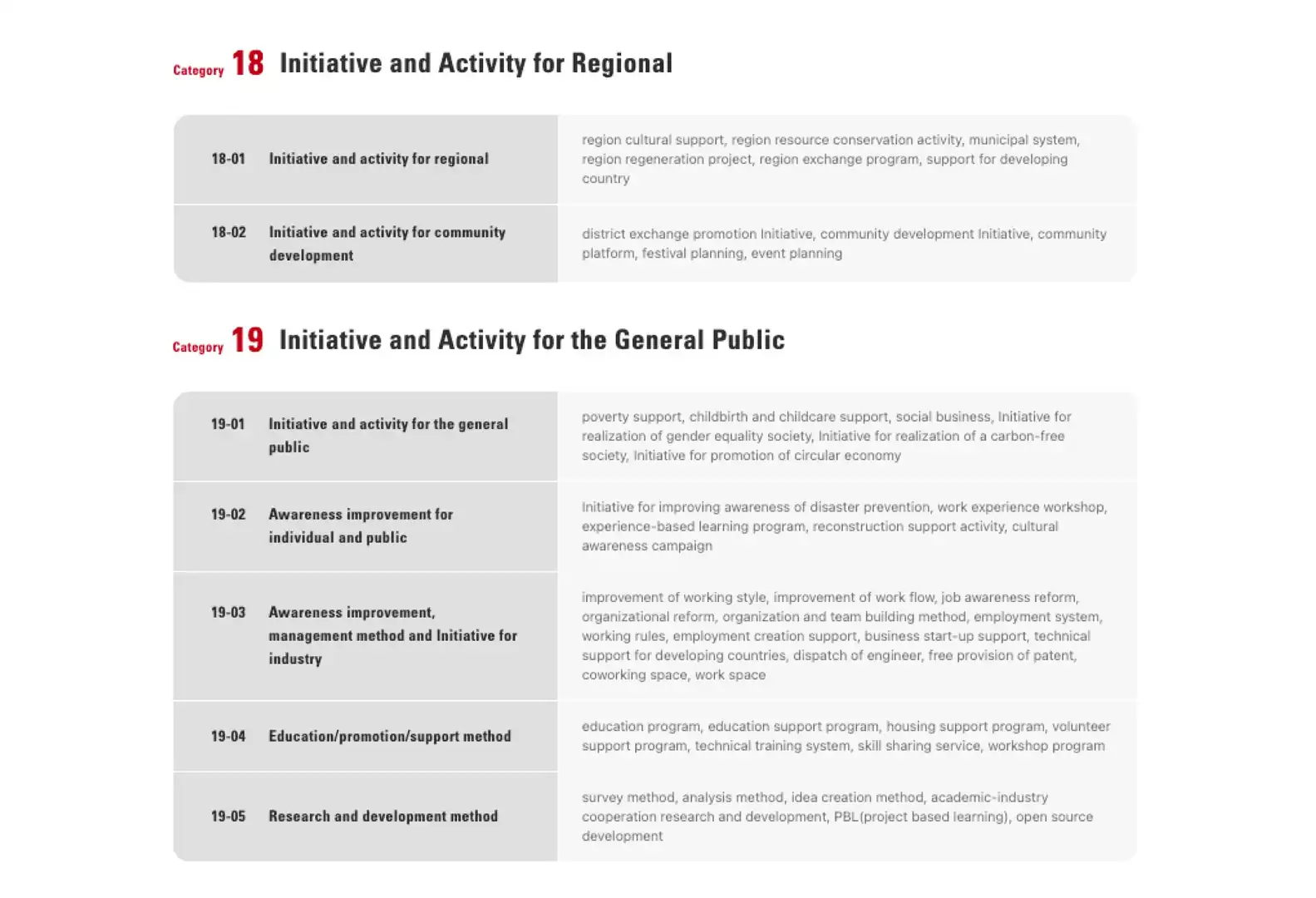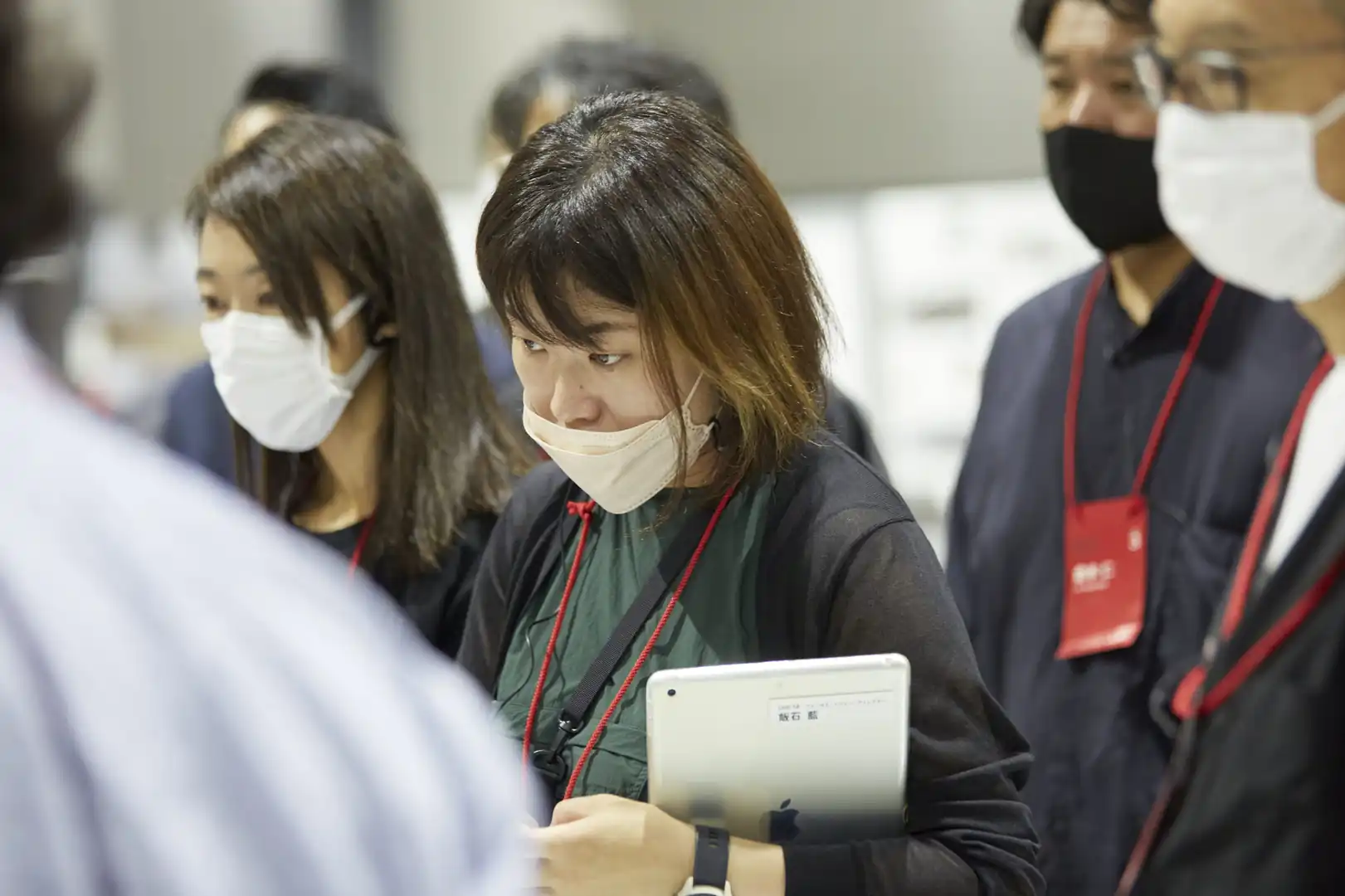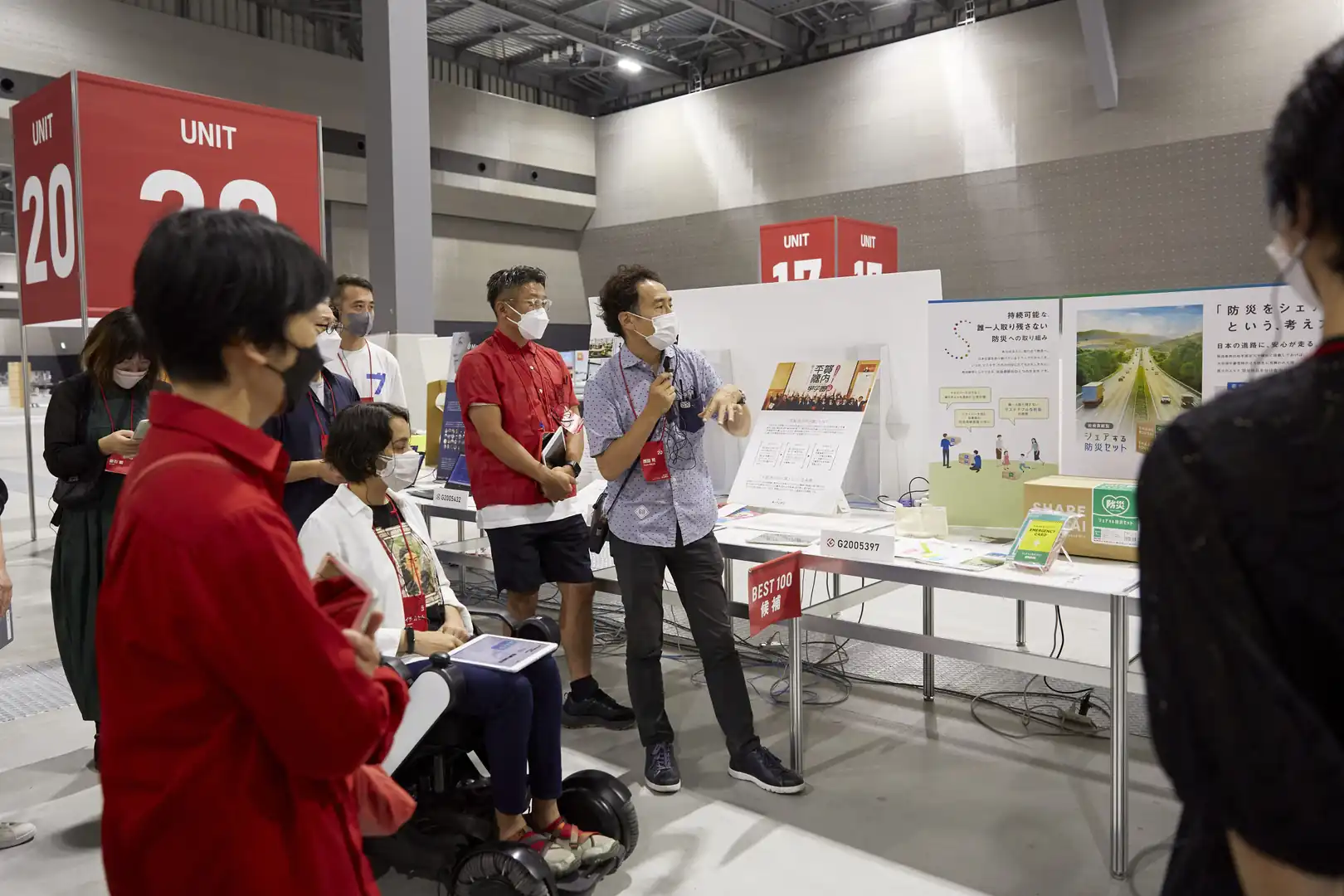
Delivering the "Now" of the GOOD DESIGN AWARD
The thoughts that go into the application for the GOOD DESIGN AWARD, The thoughts that go into the judging of the GOOD DESIGN AWARD, Various thoughts intersect and connect The process of exploring "GOOD DESIGN" will be delivered to you.

“Steps taken for the task at hand” as the subject of application. What is the “Initiatives and Activities” field of the GOOD DESIGN AWARD?
2023.05.12
The GOOD DESIGN AWARD has a screening unit that covers a wide range of “Initiatives and Activities” such as regional projects, and educational and medical programs. Entries in this category have won the GOOD DESIGN GRAND AWARD two years in a row, including last year’s “Magical Dagashiya Tyrol-Do” and “AVATAR ROBOT CAFE DAWN ver.b and avatar robot OriHime” in 2021. It is a category in which many companies and organizations apply for GOOD DESIGN AWARD for the first time, yet it is a field that is attracting a lot of attention. This article will outline the application guide and the important points in screening.
The 2023 GOOD DESIGN AWARD has a total of 19 entry categories. When you apply, you need to think about “in which domain you want to be judged” and select an entry category.
In this article, we will introduce designs that are judged in the “Initiatives and Activities” field, which consists of two categories: Category 18, “Initiative and Activity for Regions” and Category 19, “Initiative and Activity for the General Public.”
What is the design of “Initiatives and Activities”?
Specific examples of “Initiatives and Activities” are posted on the website.

In addition to those listed, a wide variety of initiatives and activities closely related to our lives are judged in this field, from resolving major issues to resolving minor problems around us and the people who support them. In other words, all “steps taken for the task at hand” are eligible for application.
However, because it is a field that is so familiar to us, many people may not know what aspect of their initiative/activity is considered “design” and how is it evaluated as “design.”
What is considered “design”?
In the “Initiatives and Activities” field, which is often referred to as design of mechanisms or communication, what is considered design and how is it judged? A clue to this question lies in the five screening guidelines that were utilized in the “Initiative and Activity for Regions” category last year.
・Does it focus on essential social issues? ・Is there originality in the content and structure? ・Is the expression or product (output) beautiful? ・Is it continuable and proven? ・Can it be empathized with by society as a whole and considered as good design?
These were set out independently for this field in addition to “Screening perspectives,” the overall guiding principle of the GOOD DESIGN AWARD. In this article, we will focus on the “beauty” and “continuity” of deliverables.
First of all, “beauty” does not mean being beautifully decorated. One of the criteria for beauty is that the activity is consistent with the presentation.
For instance, an appearance that is difficult for target users to understand, not appealing enough to encourage users to participate, or overly decorative and thus distract users’ attention from the content is an example of discordance between content and representation.
What is necessary for a “beautiful design” is to clarify “for whom the initiative is intended” and to have the best representation in order to deliver it to people who want it.

Understand what “phase” your initiative is in
Secondly, let’s consider “continuity.” One of the characteristics of “Initiatives and Activities” is that there are “phases.” For example, there is no “completion” for initiatives and activities, whereas product design can be completed once it has achieved a form that can be used by users. That is why some of the past winning projects are only a few months old, whereas others have been around for many years.
In other words, “continuity” is more than just evaluating items that last a long time. So, what points will be evaluated? To start with, let’s divide the status of projects into three phases based on the period.
- New initiatives and activities
- Initiatives and activities that have started to run continuously
- Initiatives and activities that have been ongoing for a long time
What should be done or designed differs depending on each phase. We asked Ai Iishi, one of the judges in the “Initiatives and Activities” field, how the points of screening change as the phase of projects changes.

- At this stage, it is important to raise awareness among the people involved in the project and change their mindset about the problem you are trying to resolve through the project. What issues does the project aim to resolve? We examine what mechanisms or approaches are made in the project, and how the people who are involved have been changing, as well as future possibilities.
- At this stage, we look at how effective the specific actions you are taking to resolve the issues are. In addition to what kinds of mechanism you are creating as mentioned in 1., we would like you to provide a clear description of what kinds of solutions the project is actually contributing to and how it is encouraging people to change their behavior. (Describing the effects from both quantitative and qualitative aspects)
- At this stage, we expect that your project already has a track record and the activity itself is well known. In that case, in addition to what activities have been carried out so far, we would also like you to indicate how you are implementing mechanisms to ensure that your project continues to run in the future, as well as its future outlook.
You will find that different screening perspectives are applied at different phases, for example, how specifically a newly launched project is planned to be continuous, or, if the project has been running for some time, how effective it has turned out to be. What you should do first is to objectively understand at what stage your initiative and activity is, and the strengths of your project.

To review your initiatives and activities objectively, it may be a good idea to start by writing your own answers to these five guidelines.
The benefits of “figuring out” the current status of your initiatives and activities are not limited to applications for the GOOD DESIGN AWARD. In the future, why not use the GOOD DESIGN AWARD as another step to reach more people, resonate with them, and change society little by little?
Maki Ohashi
Editing & writing
A member of the editorial team for web media “.g Good Design journal.” She plans, edits, and writes content as a freelancer.


